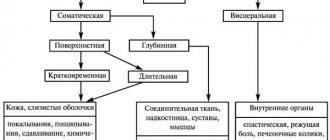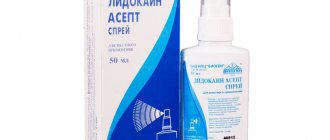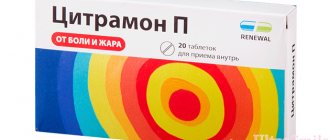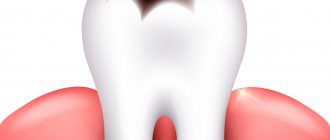Acute toothache usually takes a person by surprise, often at night, when there is no way to seek help from a dentist. You have to take toothache pills to ease the pain before visiting the doctor. Painkillers should only be used as an emergency treatment.
How to relieve a toothache, which drug is best suited for relieving pain, largely depends on the cause that caused it.
The causes of toothache are various dental diseases:
- caries - bacterial destruction of hard tooth tissues. The pain is minor, mainly occurs when brushing teeth, when exposed to cold or hot food;
- pulpitis - inflammation of the neurovascular bundle, which is accompanied by severe excruciating pain, intensifying at night;
- periostitis - purulent inflammation of the periosteum, severe, throbbing pain;
- periodontitis - suppuration of the soft tissues around the root of the tooth, intense pain;
- injuries, cracks cause damage to the crown of the tooth, which leads to nerve exposure and aching pain;
- hypersthesia - increased sensitivity of the tooth to external irritants, pain appears when the tooth comes into contact with hot, cold, sour food;
- eruption of wisdom teeth, pericoronitis - aching, pulling toothache that affects the jaw and cheeks.
Conventionally, all types of painkillers for toothache are divided into 2 groups.
How to use painkillers?
When using painkillers, you need to remember that they do not act on the cause of toothache. They alleviate the condition and relieve discomfort only for a while. But you can’t take them for a long time, so you’ll still need to visit the dentist. But such drugs are among the most popular; everyone has them at home.
When choosing painkillers, you need to pay attention to several factors:
- study the composition, there should be no components that cause allergies;
- pay attention to the release form and method of administration;
- determine what the dosage should be for the desired effect;
- take into account the nature of the pain, its intensity, the presence of inflammation or swelling;
- how quickly the effect manifests itself, how long it lasts;
- study the presence of contraindications and possible side effects.
You should take painkillers with caution if you have a stomach ulcer, kidney failure, or blood pathologies. For any chronic diseases, allergies, disruption of the endocrine system, the choice of drug should be agreed with a doctor. And for some diseases of the oral cavity, taking painkillers is not only ineffective, but also dangerous. In addition to systemic side effects, they can lead to complications that may require tooth extraction.
Nonsteroidal anti-inflammatory drugs (NSAIDs)
The mechanism of action of these drugs is their ability to slow down the production of prostaglandins, inflammatory mediators that cause pain. The drugs have anti-inflammatory and analgesic effects. For severe pain syndrome, when it is necessary to quickly relieve toothache, medications from this group are used:
- Ketanov,
- ketorol,
- nimesulide,
- aertal,
- nurofen,
- naiz.
Let's go through the list
This material is not an advertisement for any products, so we will list the most suitable solutions in tablets for toothache in alphabetical order:
- Analgin.
- Ibuklin.
- Ketanov.
- Ketorol.
- Moment.
- Nise.
- Nimesil.
- Nurofen (ibuprofen and drugs identical to this group).
- Sanaprox.
- Tempalgin.
Ketanov is considered one of the most suitable options when asking what you can drink for toothache. It has a sufficient speed of impact, that is, fast, and at the same time effective. In some cases, such tablets help relieve even severe pain. But you should remember about the frequency of administration and dosages.
Nurofen not only helps relieve pain, but also has an anti-inflammatory and antipyretic effect on the entire body. You should be aware that some of the modifications of these toothache tablets contain a potent substance in the form of codeine. We are talking about variations of Nurofen Plus and Nurofen Plus N. It will also enhance the analgesic effect. The classic version can be used to relieve toothache in both adults and children.
A simple option with classic toothache tablets in the form of Analgin is also popular in the fight against this disease. The main substance here is sodium metamizole, which, due to its acidic structure, has a negative effect on enamel. For this reason, if there is damage in the latter, the area of carious lesions may increase. But if the filling falls out or is chipped, it will be effective.
Combination drugs
- Ibuklin, which contains paracetamol and ibuprofen, quickly relieves pain and maintains a long-lasting effect.
- Tempalgin contains the analgesic and tranquilizer tempidone, so in addition to eliminating moderate intensity toothaches, it calms the nervous system.
- Fanigan - the active substances (diclofenac and paracetamol) included in the medicine enhance each other’s effect. The drug has a strong anti-inflammatory and analgesic effect.
If you have a toothache, before relieving it at home, you need to read in detail the instructions for the painkillers you are taking, take into account the indications, contraindications, and possible side effects.
Disadvantages of tablets
Painkillers also have a downside: almost all pills have side effects.
- Negatively affect the functioning of the digestive system. Erosion and ulcers can form on the walls of the stomach, so if there are problems with the gastrointestinal tract, it is better to choose a different method.
- Disturbs liver function.
- They can cause headache, shortness of breath, swelling, skin rashes, etc.
Most analgesics are prohibited for expectant and nursing mothers, young children and people with systemic diseases that are included in the list of contraindications. Therefore, it is recommended to consult a doctor before use.
Local anesthesia in dentistry: types, advantages and disadvantages
In many standard situations, treatment or complete tooth extraction is carried out using local anesthesia. Thanks to this method of anesthesia, dentists can eliminate pain. However, after the administration of an anesthetic, sensitivity is not completely lost: the patient feels a touch, which causes discomfort. To minimize this kind of inconvenience, the patient is prescribed sedatives on the eve of the procedure. Common local anesthetics used in a huge number of clinics: Novocaine and Lidocaine.
In the medical practice of modern dental science, more effective medications are also used. Dentists identify six methods of local anesthesia, based on the scope of application and methods of administering the drug:
- Application anesthesia is intended for superficial anesthesia. The dentist sprays the spray onto the desired area in the mouth. It is possible to treat part of the mucous membrane with an ointment containing an anesthetic. This manipulation is carried out by the doctor right before the start of the procedure. The main component of this product is Lidocaine (10%) in aerosol cans. Application anesthesia is practiced when grinding a tooth before prosthetics or when there is reduced sensitivity of soft tissues. Such anesthesia is also used for stomatitis, gingivitis and the need to open minor suppurations.
- If work is being done on one tooth and only that tooth needs to be numbed, the dentist uses infiltration anesthesia. With its help, one tooth and a small part of the mucous membrane near it are deprived of sensitivity. This is how deep caries is treated and the nerve bundle is removed. The injection is administered into the protective area of the upper part of the tooth. It blocks the passage of a signal from the area of irritation. This method is used when treating teeth on the upper jaw: it is thinner than the lower jaw and the anesthetic penetrates more easily to the nerve endings.
- Conductor. Designed to relieve pain in two adjacent teeth. Or when infiltration anesthesia does not properly numb the desired area. Conduction anesthesia is effective for tooth extraction, opening abscesses, exacerbation of chronic periodontitis and cleansing the cavity from purulent foci.
- Intraligamentary anesthesia is used in dentistry for children: they provide pain relief during the treatment of caries and its possible complications. The mucous membrane remains sensitive so that the child does not involuntarily bite his tongue, cheek or lips.
- Tooth extraction is accompanied by intraosseous anesthesia: the effect is lightning fast, but not long lasting. The dentist makes an injection into the gum; the anesthetic drug blocks the sensitivity in a certain tooth. Local numbness occurs, after which the dentist makes a second injection into the lip from the inside.
- Stem anesthesia is used in situations where the degree of pain experienced by the patient is high, with neuralgia, with significant injuries to the jaws or cheekbones, when surgical intervention cannot be avoided. The nerves are blocked simultaneously in both jaws. The use of such anesthesia is more effective and lasts longer.
Prevention of dental diseases
From a very young age, everyone knows what needs to be done to prevent teeth from hurting:
- Regular oral hygiene. You need to brush your teeth thoroughly, morning and evening, using a good toothpaste and brush. During the day, after each meal, you should rinse your mouth thoroughly, ideally using dental floss.
- Visit the dentist twice a year for preventative care.
- Eliminate any foci of infection in the oral cavity in a timely manner and carry out sanitation in a timely manner.
- Do not neglect modern methods of protecting teeth - fluoridation, remineralization, fissure sealing.
In addition, dental health largely depends on what we eat - the diet should include as many fresh vegetables and fruits, fish, and lean meat as possible; Eliminate sugar and sweets as much as possible. Teeth should be protected from mechanical damage, and do not overuse whitening toothpastes.
Author: Elena Grunina Dentist-therapist, endodontist. Work experience more than 9 years. The information is for reference only. Before treatment, consultation with a doctor is necessary.
Medicines used in dentistry for pain relief
Many dentists prefer to work with drugs from the articaine series. The choice is justified by their effectiveness and an order of magnitude higher quality than Lidocaine and Novocaine. The main advantage of such painkillers is their direct effect on areas of inflammation. Painkillers often contain adrenaline and epinephrine. Under their influence, vasoconstriction occurs, increasing the strength of the drug.
The most common anesthetics:
- Ultracaine is a medical analgesic drug originally from France, which is produced in three modifications. The difference is based on the concentration of epiniphrine and its concentration in the drug. The absence of such a component, which has a vasodilating effect, affects the duration of pain relief: it reduces it by 20 minutes. The anesthetic can be administered to children over 4 years of age and pregnant women. A separate form of the drug has its own list of contraindications.
- The composition of the anesthetic Ubistezin is similar to Ultracaine. It is developed and produced in two forms, the difference between which is the different concentration of epinephron. On average, it lasts for 30-40 minutes. Designed for patients suffering from heart disease and patients with high blood pressure. Used for standard procedures: tooth extraction and treatment.
- The anesthetic Septanest contains articaine and adrenaline with a small amount of preservatives. It is allowed to be used by pregnant women, during the lactation period, and children over 4 years old. Allergy sufferers should not use this pain reliever. The effect of the drug lasts no more than five minutes.
Types of pain relief in the dental office
Anesthesia can be general or local. There is also a distinction between medicinal and non-medicinal anesthesia. The last method of pain relief is rarely used, it includes:
- Electroanalgesia. Direct electric current or electrophoresis with anesthetics such as Novocaine or Trimecaine is used.
- Audio analgesia. Sound anesthesia, which involves the use of quiet music and monotonous sounds to calm the patient.
- A method of computer anesthesia that allows you to administer an anesthetic under computer control. The possibility of overdose and the occurrence of unpleasant sensations during the injection procedure is completely excluded.
Drug anesthesia is based on the administration of an individually selected anesthetic. The entry of pain signals into the cerebral cortex is completely blocked. Due to this, sensitivity in the area of the body that is amenable to intervention is lost for the required period of time. After completion of the surgical intervention, the drug is independently removed from the tissues and sensitivity returns.
This anesthesia is considered one of the most common and allows you to protect the patient from pain during dental procedures. General anesthesia is rarely used. The exception is cases when it is necessary to carry out a large number of different procedures, taking into account the patient’s intolerance to certain components of anesthetics for local use. Such anesthesia is permitted for use in dental treatment in children over four years of age or during maxillofacial operations.
What to do if your tooth hurts at night
The most insidious is night toothache. Often this symptom indicates pulpitis, which requires immediate medical attention. Therefore, if it is not possible to see a doctor at night, do it at the beginning of the working day.
Algorithm of actions for night toothache
- Rinse your mouth with a solution of salt or soda. Perhaps the acute pain is associated with food debris that irritates the nerve endings.
- Take a pain reliever. Choose those drugs that you have used before and are sure that you do not have an allergic reaction to them.
- Raise your pillow higher. This will help you fall asleep faster and reduce the throbbing pain that radiates to your head and neck.
- If you cannot bear the pain and medications do not help, contact a clinic that provides dental services at night.
- Call an ambulance if your toothache at night is unbearable. The doctor will give you an anesthetic injection.
- Visit your dentist in the morning to determine the cause of your toothache and begin treatment.
When is it okay to use painkillers?
All situations in which it is permissible to combat painful symptoms with the help of NSAIDs can be divided into two large groups:
- recovery period after dental treatment;
- the time before visiting the dentist.
In the first case, you need to take the drug for as long as the doctor said. The dosage and frequency of its use cannot be exceeded. If the composition does not help, you need to consult a dentist about replacing it.
In the second case, a one-time use of an over-the-counter product is allowed. This can be done if it is not possible to get to a doctor today, and the destroyed unit aches very much. But constantly drinking analgesics or NSAIDs, postponing a visit to the dental center, is unacceptable.









